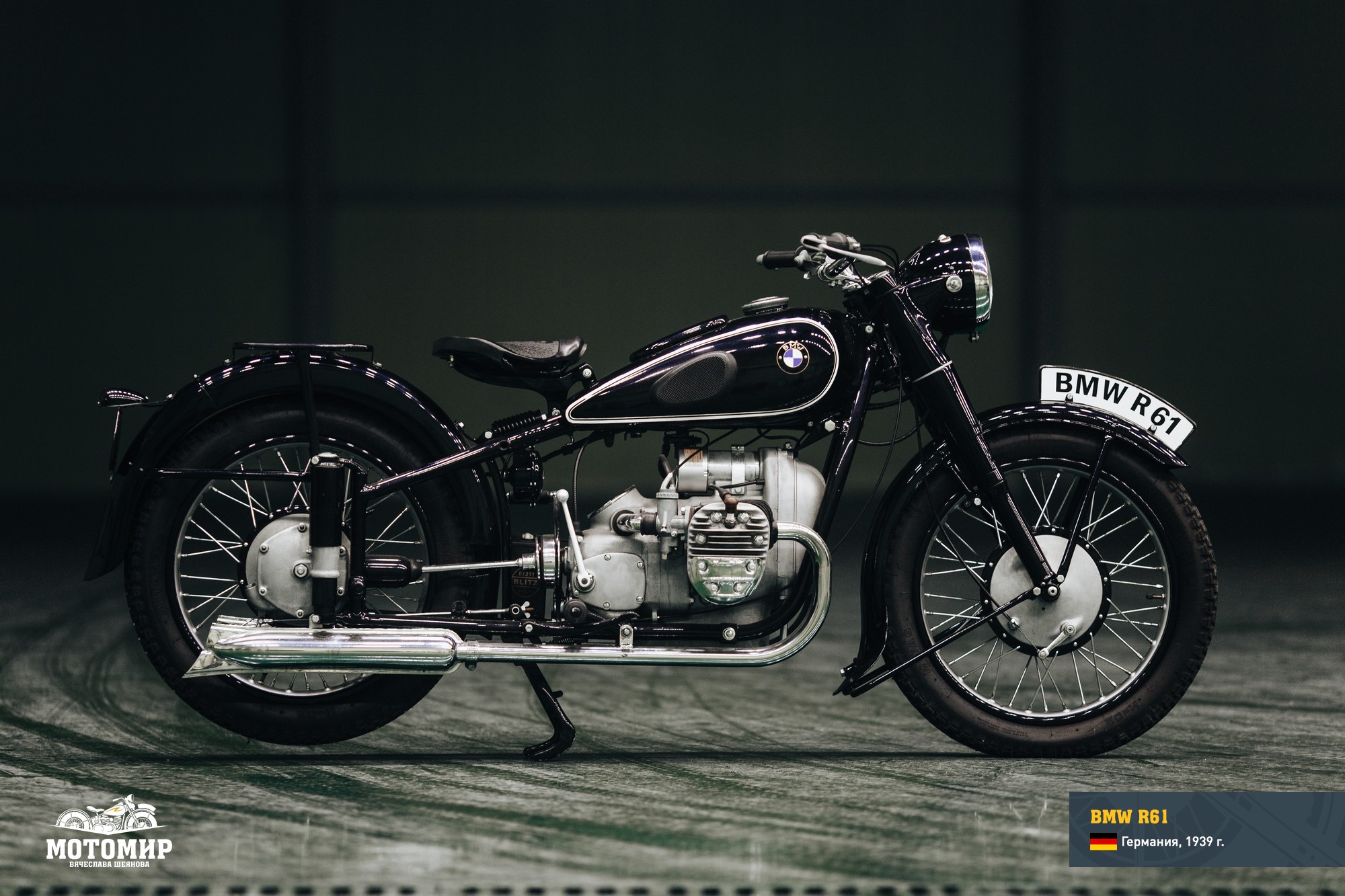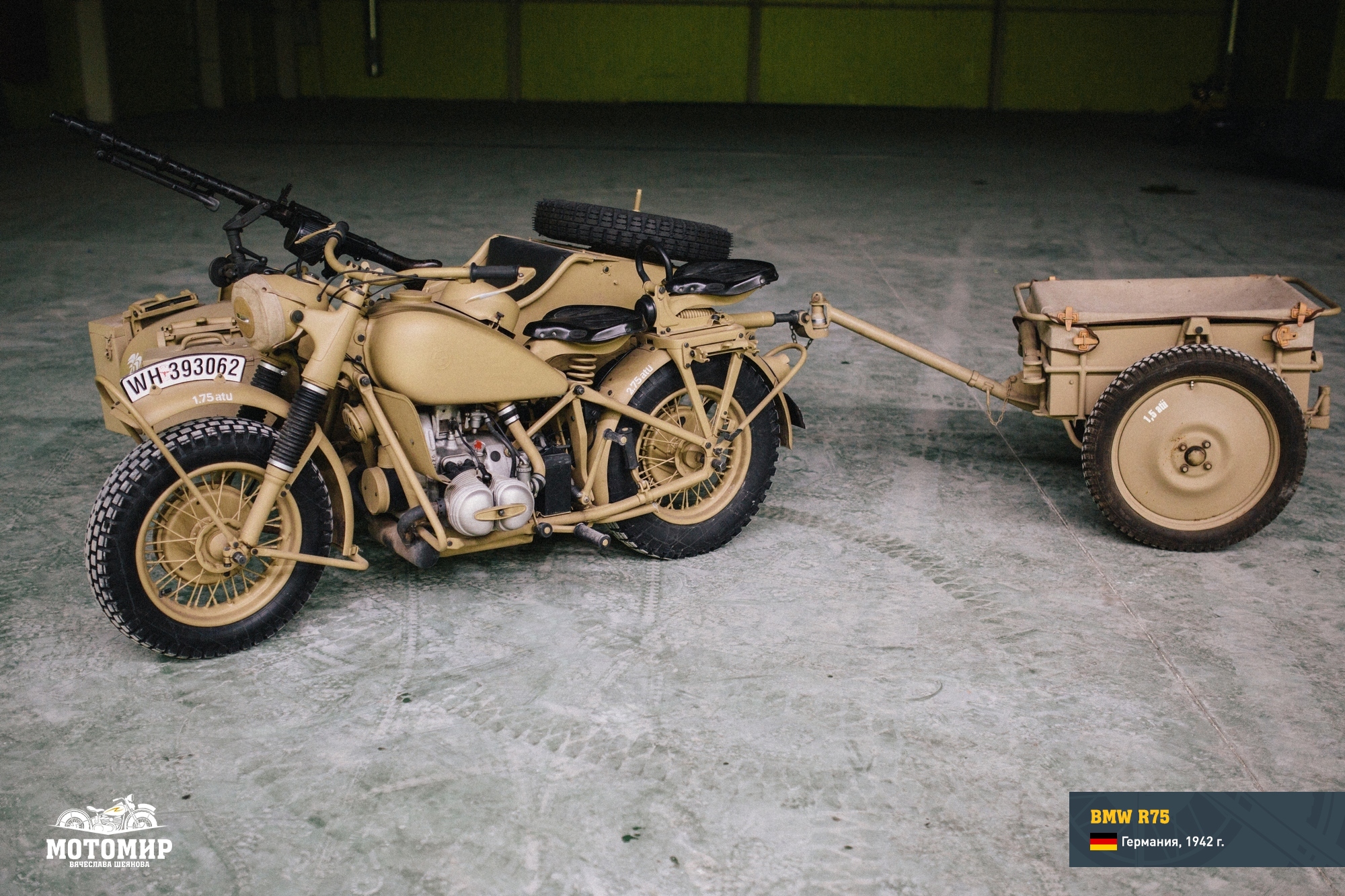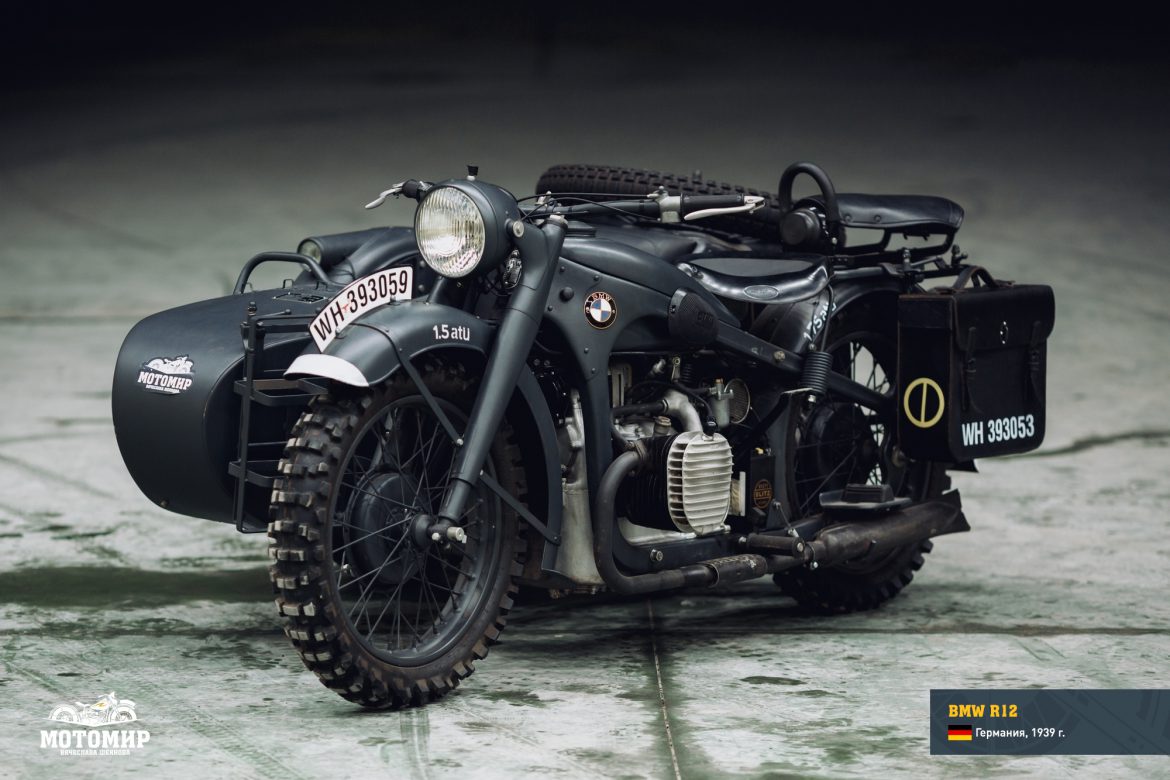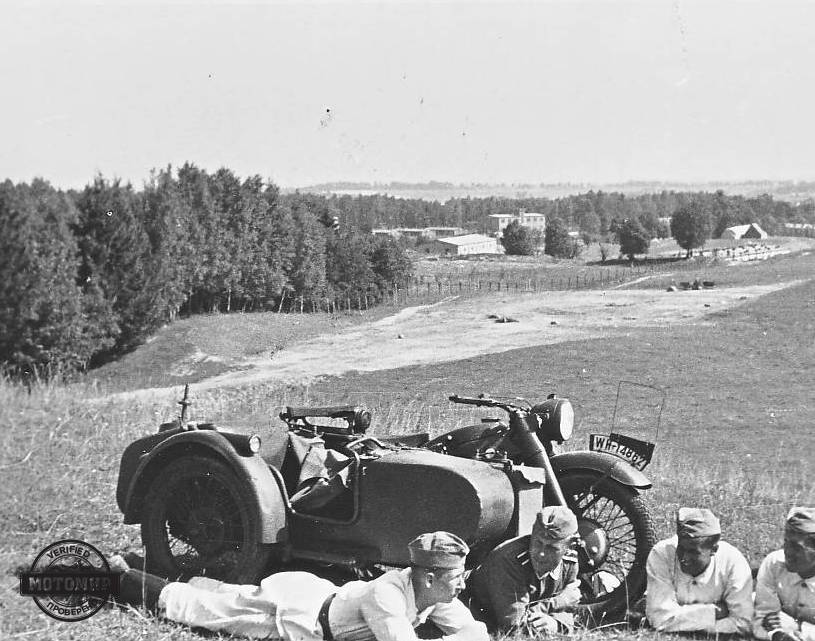This entry is also available in: Russian Chinese (Traditional)
Motorworld’s newspaper №69
One of the most famous motorcycles of the World War II, known as BMW R12, was made by Germans and had an almost perfect design, but some details weren’t prepared for bad Russian roads at all. Thus a tight space between an arm and a wheel usually was quickly field with mud or snow, which made the further movement of the motorcycle impossible.
The genealogy of this motorcycle can be traced up to R62 in 1928, but R12’s non-standard perimetric steel frame makes it closer to the models R11 and R16 that had been produced in 1929. The one-of-a-kind perimetric frame signified a huge step away from the bicycle design heritage in the structure of this motorcycle. The frame was designed to get rid of cracks in the welding seams, but early problems with riveted seams led to the introduction of electric arc welding in 1936.
The BMW R 12 was outfitted with a telescopic front fork using hydraulic shock absorbers to augment maneuverability (such a design was used for the first time ever, anywhere), and it strayed far away from its predecessors due to its 4-speed transmission and interchangeable wheels.
Despite a formidable weight (over 180 kg), the combination of a powerful 746cc SV engine, 4-speed transmission, and cardan shaft made this vehicle a rather fast and reliable machine. The R12 model was comfortable on the whole, even despite the rigid suspension of the rear wheel.




In the BMW Blätter magazine (1935) about BMW R12: “In general, the design is extremely sturdy, so that the fork with its elasticity provides a sufficient level of safety. Suspension works fast, but the recoil is so much muffled that the motorcycle becomes “glued” to the ground so you can go without drifting on potholes at full speed. The machine also makes incredible turns.”.




BMW R 12 was used both solo and with the sidecar, but unlike R75, a new BMW model of the period, the non-driven sidecar wheel had a negative effect on the off-road passability.

BMW R61, “Motorworld by V.Sheyanov” collection”

BMW R75, “Motorworld by V.Sheyanov” collection
By May 1941 around 36 thousand motorcycles were produced, and in the first year of production, the output was 10 thousand units. Around 10 thousand more units were made specially for the Wehrmacht, but many civilian vehicles were also requisitioned for the front. BMW R 12 had been the most mass-produced BMW motorcycle until the R 75/5 model was presented in the 1970s.
Despite a long-timed production of this model until 1941, the R 61 and R 71 models practically superseded the BMW R 12 by 1938.
| Manufacturer | Bayerische Motoren Werke, AG, Munich (Germany) |
| Years of manufacture | 1935 – 1942 |
| Quantity produced, units | 36 000 |
| Price | 1 630 RМ |
| Today’s value | 11 111, 0 $ |
| ENGINE AND TRANSMISSION | |
| Type | Twin-cylinder, horizontally-opposed |
| Engine capacity, cc | 745 |
| Bore and stroke, mm | 78 х 78 |
| Power | 18bhp @ 3400rpm |
| Sparking | Magneto or battery type |
| Carburetor | 1 x Sum CK, 25 mm |
| Battery | 6 V |
| Clutch | Dry, double-plate |
| Transmission | 4-speed |
| FRAME AND WHEELBASE | |
| Frame type | Steel, stamped, perimetric |
| Front suspension | Telescopic |
| Rear suspension | Rigid |
| Brakes | Drum type |
| Wheel size | 3,50 х 19 |
| DIMENSIONS | |
| Length, mm |
2 100
|
| Width, mm |
900
|
| Height, mm |
940
|
| Wheelbase, mm |
1 380
|
| Ground clearance, mm |
140*
|
| Seat height, mm |
740*
|
| Mass, kg |
185
|
| Gas tank size, l |
14
|
| Maximum speed, km/h |
110
|
| Range, km |
|































